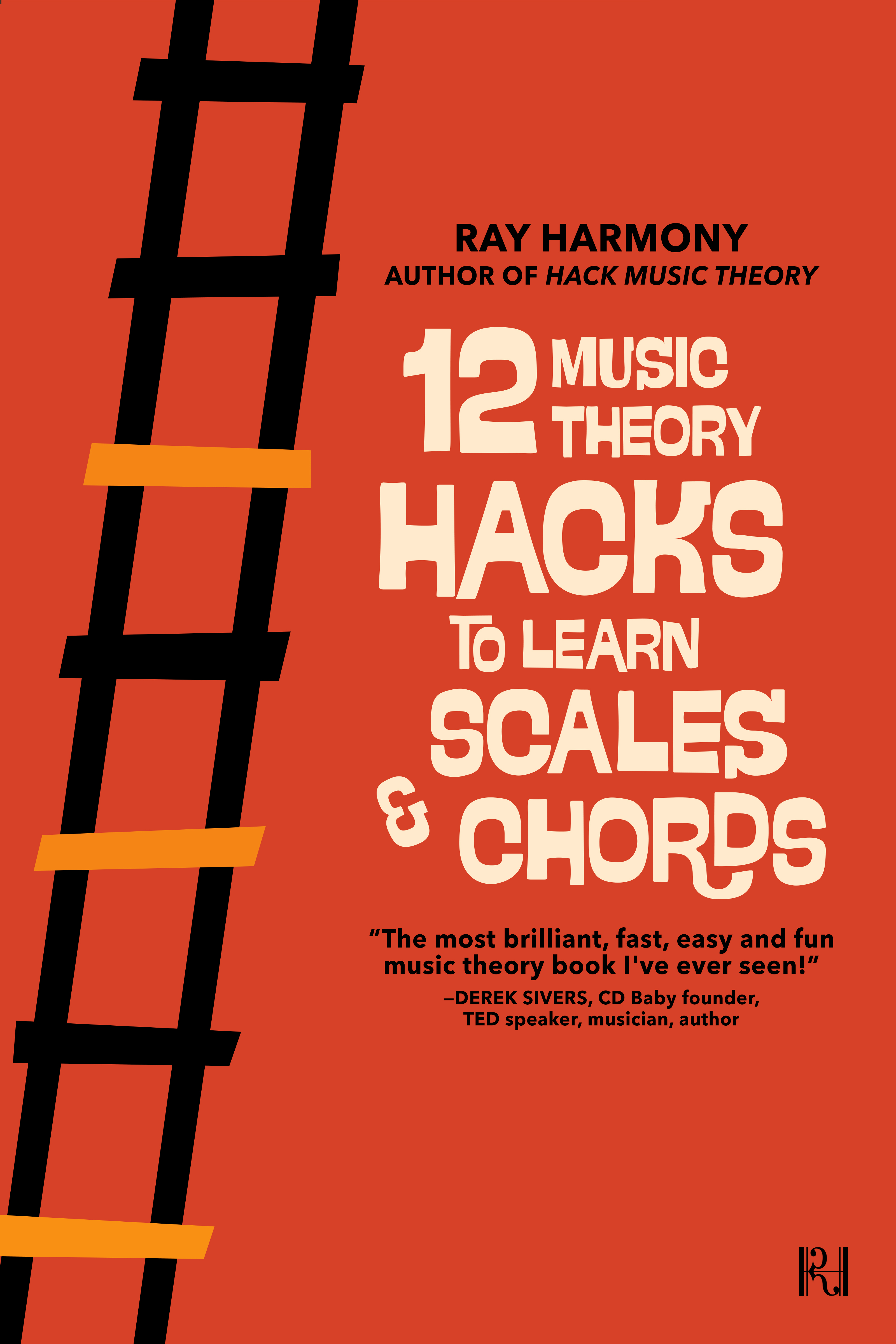TesseracT has a liberating approach to time signatures, so in this music theory lesson, you’ll learn their hack to magically change your song's tempo without changing its BPM. But first... Tea!
Hello, we are Kate Harmony & Ray Harmony (AKA Revolution Harmony), and welcome to the Hack Music Theory show, where you are empowered with notation-free theory for making great music in DAWs.
HACK 2 - Dot the Pulse & Cross the Bar
This hack is what TesseracT brilliantly use in the collosal opening and closing riff of Luminary, which is in D Phrygian (the dark mode). With this hack, TesseracT pull off one of the most powerful illusions in music: they slow down, without changing the BPM. This is known as metric modulation, which is just a fancy way of saying that the pulse of the music has changed. Shortening the pulse speeds things up, while lengthening the pulse slows things down. Yeah and the rest of Luminary has an eighth-note pulse at 78 bpm, but in this riff, they lengthen the pulse to a dotted eighth-note, which slows down the riff and makes it extra sludgey and heavy! Also, as you may know, a dotted eighth-note equals three sixteenth-notes, so what they’ve masterfully done here, is go from a 12/8 feel to a 12/16 feel. Amazing!!! Just a quick heads up, if you’re working in a fast tempo, you’ll be doing this hack with quarter notes and dotted quarter notes. Finally, yes this works in all genres, so whether you write prog metal chords, djent guitar riffs, EDM bass lines, or pop vocals, this hack will help! Now, here’s how you can use this hack in your own music in 3 simple steps:
STEP 1: Dot the Pulse
First things first, you need to cement in the new pulse, so your listeners truly experience a slowing down of the music, and the best way to do that is to start with a basic drum beat. So, let’s get some hats on that new dotted eighth-note pulse, a kick on the 1st beat, and a snare on the 3rd hat. Then, we need a common thread to tie together the new pulse and the old pulse, so they’re different but still rhythmically connected, and we’re gonna copy the TesseracT drummer’s very clever hack here of playing sixteenth ghost notes on the snare (ghosts notes are notes played really quietly). And remember, metric modulation is not changing tempo randomly, your new pulse should come from a note value in your previous section. Right, now just copy and paste this bar three times, and we’re ready to riff!
STEP 2: Write the Riff
Go wild and have fun here, but just remember to emphasise the root note enough, so your listeners will perceive it as the home. Also, don’t be shy with the ♭2, cos that’s what makes Phrygian different to just the regular old minor scale (AKA the Aeolian mode). And be sure to use a variety of note values in your riff, too. And by the way, if you need help writing riffs, you’ll also find that in our Songwriting & Producing PDF (scroll down).
STEP 3: Cross the Bar
Finally, now that we’ve dotted the pulse, it’s time to reveal the last part of this hack. It’s super simple but unbelievably effective! Here’s how it works: For extra intrigue, don’t accent the 1st beat of your third bar (just like in the Luminary riff). By hiding this 1st beat, you disguise your time signature, and add even more mystery to your riff. Such a tasty technique! The easiest way to do this, is to just extend your sixteenth-note run at the end of bar 2, by adding a couple notes to it. Tada, your riff just got the TesseracT “Dot the Pulse & Cross the Bar” makeover!
Lastly, do you struggle to finish your music? If you do, then check out our online apprenticeship course, where you’ll learn how to effortlessly write new sections for existing sections, how to transition between them, and most importantly, how to finish your songs! For more info, just head on over to our Apprenticeship Course. Alright, enjoy the video/podcast.
Kate & Ray Harmony (AKA Revolution Harmony)
Music Teachers & Producers in Vancouver BC, Canada
LEARN
1: Read our free book (below) & watch our YouTube videos
2: Read our "Part 1" book & "Songwriting & Producing" PDF
3: Learn how to become a song-whisperer, and effortlessly finish music!
ABOUT
Hack Music Theory is the pioneering notation-free method for making great music. Taught by award-winning music lecturer Ray Harmony, and his protégé (and wife) Kate Harmony, from their studio in Vancouver BC, Canada. Ray is the author of critically-acclaimed book series "Hack Music Theory", and has made music with Serj Tankian (System of a Down), Tom Morello (Rage Against the Machine), Steven Wilson (Porcupine Tree), Ihsahn (Emperor), Kool Keith (Ultramagnetic MCs), Madchild (Swollen Members), and many more. Kate has the highest grade distinction in Popular Music Theory from the London College of Music, and is the only person on the planet who's been trained by Ray to teach his Hack Music Theory method! While these Hack Music Theory YouTube lessons teach music theory for producers and DAW users, they are designed to accommodate all music makers (songwriters, guitarists, etc.) and all genres, from Electronic Music to R&B, Pop to Hip-Hop, Reggae to Rock, EDM/Dance to Metal (and yes, we djefinitely Djent!).
 | |
Wooohooo!!! You’re a mere 30 minutes away from being even smarter than you already are. Just head over to your inbox now for your free download.
